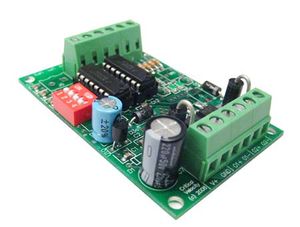Difference between revisions of "4-20mA Controllers"
Jump to navigation
Jump to search
| Line 1: | Line 1: | ||
[[Category:Control Systems]]{{Knoppen}} | [[Category:Control Systems]]{{Knoppen}} | ||
[[File:4-20mA controller.jpg|thumb|right|4-20mA Controllers]] | [[File:4-20mA controller.jpg|thumb|right|4-20mA Controllers]] | ||
'''4-20mA Controllers''' are a point-to-point or multi-drop circuit mainly used in the process automation field to transmit signals from instruments and sensors in the field to a controller. It sends an analog signal from 4 to 20 mA that represents 0 to 100% of some process variable. As a current loop signal, 4-20 mA also powers the [[Sensors|sensor]] transmitter on the same wire pair, and 4-20mA provides more resistance to interference than a voltage-based line. | |||
'''4-20mA Controllers''' are a point-to-point or multi-drop circuit mainly used in the process automation field to transmit signals from instruments and sensors in the field to a controller. It sends an analog signal from 4 to 20 mA that represents 0 to 100% of some process variable. As a current loop signal, 4-20 mA also powers the sensor transmitter on the same wire pair, and 4-20mA provides more resistance to interference than a voltage-based line. | |||
Latest revision as of 22:17, 27 February 2013
4-20mA Controllers are a point-to-point or multi-drop circuit mainly used in the process automation field to transmit signals from instruments and sensors in the field to a controller. It sends an analog signal from 4 to 20 mA that represents 0 to 100% of some process variable. As a current loop signal, 4-20 mA also powers the sensor transmitter on the same wire pair, and 4-20mA provides more resistance to interference than a voltage-based line.
